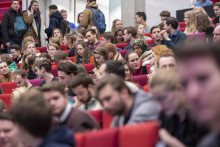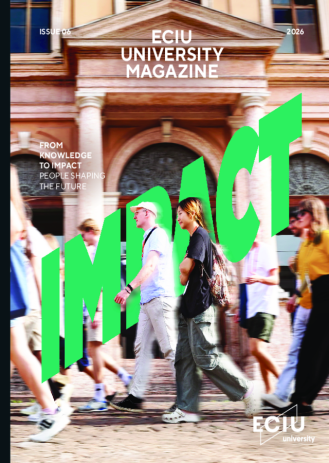A fingerprint is unique and irreplaceable and therefore a good replacement of pin passes and codes. Asker Bazen is of the same opinion. The aio at Electrical Engineering got his PhD last week for his research into improving the recognition of fingerprints.
Why fingerprints?
'I find biometrics, recognising people on the basis of physical characteristics, an interesting phenomenon. It has two advantages. Someone identifies himself with himself, not with something he is carrying. This prevents fraud. Also we will finally be able to get rid of all the codes and passes. Who isn't fed up with that? I have to admit that I don't even know all my pin codes.'
But why not look into recognition on the basis of iris, facial shape, or voice?
'The iris scan basically works the best. But it requires a really good and expensive camera. And from such a scan a lot more information than just the identity can be gathered. Illnesses for example. This is undesirable. It is also a legal problem. It is only permitted to collect the information that is really needed.'
But for fingerprints good equipment is also necessary, isn't it?
'The sensors are very small and keep getting cheaper. They have to be small so that they can be built into mobile phones for example. In future these boxes will cost about two euros a piece.'
Which applications are imaginable?
'Most people think of police and criminal investigations, but I have been more concerned with commercial applications. Mobile phones, access to buildings, getting money from an ATM. Or think of a black list at a football stadium. At the moment a trial is being held at a fitness centre. Apparently people often use other people's passes to train there.'
The demand is therefore not the problem. So what is?
The print of a finger is different every time. Someone can press too much or not enough on the sensor, or have cold or wet hands. A distortion is the result and the picture does not match the picture stored in the database. I found a solution.'
What?
'The pattern of lines on a finger shows divisions and endpoints, we call these minutiae. Each print has twenty to fifty minutiae. I compare these to the minutiae of the stored prints. Because I compare a lot of small areas to each other, the chance of mistakes is diminished considerably. New is that I use an elastic method. I not only turn and push the print, but also stretch it. In that way the distortion does not influence the match as much.'
Your research gets rather a lot of media attention.
'Earlier I presented my research at conferences and the responses have been very good. Now too, because of my thesis defense there is a lot of attention. Of course we are not there yet. The chance that the system makes a mistake is 1 in 200. This has to be reduced. It can be done, amongst others, by storing all the different variations of the fingerprint in the database. Searching very large databases is also a problem. But whether there is money to continue?'
You've probably seen a lot of fingerprints in the past few years?
'I have searched complete databases. Mind you, I have discovered that I have a special fingerprint myself, look, it has a sort of loop.'
Gosh!
'Yes, there are a few very exotic types.'
transl. DvA








